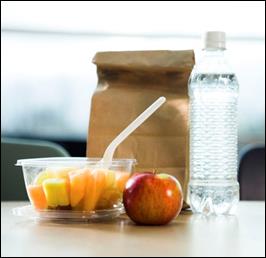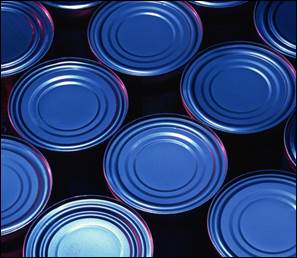By: Heidi Robertson


We come in contact with a variety of chemicals every day. This is not necessarily cause for concern. That said, we know we should limit our exposure to harmful chemicals in our environment. For example, high levels of lead and mercury can damage our health.
But what about other chemicals like Bisphenol A (BPA) and phthalates? Many of us are aware that BPA and phthalates are common in a wide variety of plastic products. BPA can be found in hard clear plastics, the linings of metal food and drink cans, or thermal papers (like receipts and tickets). Phthalates are often used to make plastics soft and flexible. They can be found in vinyl flooring, adhesives, detergents, children’s toys, soaps, shampoos and nail polish.
Many chemicals like BPA and phthalates are thought to be “endocrine disruptors,” which may interfere with the action of hormones in our bodies. This means they could potentially be linked to harmful effects on developing fetuses. Health Canada researchers wanted to find out how a mother’s exposure to these chemicals might affect a baby’s growth and development.

The Maternal-Infant Research on Environmental Chemicals (MIREC) study followed approximately 2000 pregnant women from 10 different Canadian cities. Researchers measured the mothers’ exposure to many common chemicals during pregnancy and in the eight weeks after birth.
In 2014, Health Canada published the first results from MIREC, which looked at levels of BPA and phthalates in pregnant women in Canada. The result was surprising!
Researchers found that MIREC participants had lower average levels in their bodies when compared to non-pregnant women of the same age (participants from the Canadian Health Measures Survey). While 88% of pregnant women had detectable levels of BPA in their urine, not all phthalates were detected. The phthalates most frequently detected were those from DEHP, a chemical used in vinyl-type plastics to make them soft and pliable. However, compared to some other pregnancy studies around the world, the levels were much lower.
Health Canada also developed a new test method to analyse 278 milk samples from MIREC study participants. The results of this study found that in general, BPA levels in breast milk were low (and lower than those reported in other countries), with measurable BPA being found in only 26% of the samples.
We don’t know why the pregnant women in the MIREC study have lower levels of BPA and phthalates than non-pregnant women in Canada. Researchers continue to explore these and other questions using data from MIREC and its follow-up studies.
For More Information: http://www.mirec-canada.ca/
